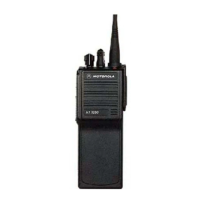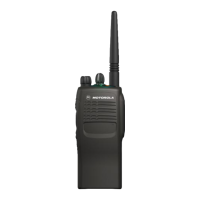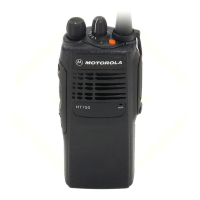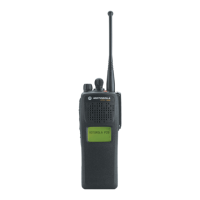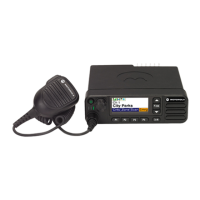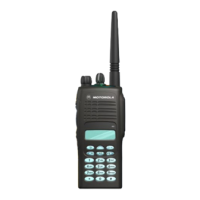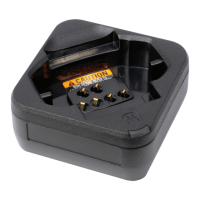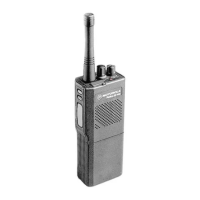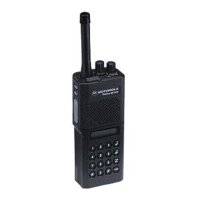12
Receiver
Alignment
Menu
Transmitter
Alignment
Menu
Signalling
Alignment
Menu
Test
Mode
Menu
Service
Menu
F2
F3 F4
F6
F2 - Reference Oscillator
F3 - Tx Power
F4 - Tx Dev Balance
F5 - Tx Dev Limit
F6 - Tx Dev Reference
F7 - Tx VCO Crossover
Note: F2 = Function Key 2
F2 - Front End (VHF/UHF)
F3 - Rated Audio
F4 - Squelch (25/30 kHz)
F5 - Squelch (20 kHz)
F6 - Squelch (12.5 kHz)
F7 - RX VCO Crossover
F2 - DTMF
F3 - Trunking
F4 - MDC 1200
MAEPF-22857-A
Figure 40-2. RSS Service Menu Layout
All service and tuning procedures are performed from
the SERVICE menu, which is selected by pressing F2
from the MAIN MENU. Figure 40-2 illustrates how the
RSS SERVICE screens are organized.
All SERVICE screens read and program the radio code-
plug directly; you do NOT have to use the RSS
GET/SAVE functions to use the SERVICE menus. You
will be prompted at each screen to save changed values
before exiting the screen. RSS references in this manu-
al are to HT 1000 RSS. Some slight differences may be
noted it you are using the MTS/MTX RSS.
The radio contains internal test modes that can be
accessed from the RSS. The test modes permit the ser-
vice technician to easily select various frequency,
modulation, and transmit power combinations to verify
proper operation of the radio. The test modes can be
used to check both transmit and receive operation.
From the Service Menu press F6 to navigate to the
TEST MODE screen.
The SERVICE screens introduce the concept of the
“softpot”, an analog SOFTware controlled POTentiome-
ter used for adjusting all transceiver alignment controls.
Each SERVICE screen provides the capability to
increase or decrease the ‘softpot’ value with the key-
board UP/DOWN arrow keys respectively. A graphical
scale is displayed indicating the minimum, maximum,
and proposed value of the softpot, as shown in
figure 40-3.
Adjusting the softpot value sends information to the
radio to increase (or decrease) a DC voltage in the cor-
responding circuit. For example, pressing the UP arrow
key at the Reference Oscillator screen instructs the
radio microprocessor to increase the voltage across a
varactor in the reference oscillator to increase the
frequency.
In ALL cases, the softpot value is just a relative
number corresponding to a D/A (Digital-to-Analog) gen-
erated voltage in the radio. All standard measurement
procedures and test equipment are similar to previous
radios.
MAEPF-22858-O
Figure 40-3. Softpot Concept
Do NOT switch radios in the middle of any
SERVICE procedure. Always use the EXIT
key to return to the MAIN menu screen before
disconnecting the radio. Improper exits from
the SERVICE screens may leave the radio in
an improperly configured state and result in
seriously degraded radio or system perfor-
mance.
!
CAUTION
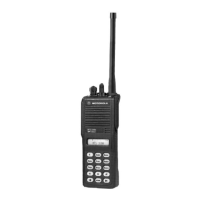
